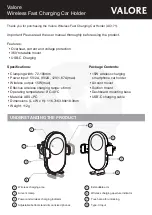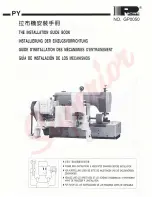
Rheonics | Switzerland | U.S.A.
SRV, SRD, SRV-FPC, SRD-FPC Installation and Intrinsic Safety Manual
P. 21
Version 2.0, Updated: October 29, 2020
Rheonics GmbH, Klosterstrasse 19, 8406 Winterthur, Switzerland
©Rheonics. Rheonics confidential and proprietary information.
Zener diode barrier is required for the installation. Although the electronics unit will function
with this circuit, the accuracy of the temperature measurement must be verified and possibly re-
calibrated by the end user.
In all cases, the sensor-
side diagram shows a ground connection to the sensor labeled “Ground
tab (optional)
”
. This refers to the installation of an equipotential bonding connection to the
sensor. The options for bonding to the sensor body are given in section
, following the
installation diagrams.
Cable conductor colors are given for convenience only. They reflect cables whose conductors are
color coded according to the DIN 47100 norm.
It is the installer’s re
sponsibility to verify that the
correct M12 cable connector pins are routed to the proper Zener diode barrier terminals,
regardless of the actual conductor colors.
In the following wiring diagrams (Figs. 9-11), there are three types of ground connections,
labeled “G1”, “G2” and “G3”. For the Zener diode barriers, G2 is the default grounding
connection, usually provided by the manufacturer as a grounding clamp that grips the DIN rail
on which the Zener diode barrier is mounted. It is the installer’s respons
ibility to make sure that
the DIN rails are securely grounded to a known reliable grounding point.
In the case that secure grounding of the DIN rails cannot be assured, most Zener diode barriers
are provided with a screw-clamp grounding terminal labeled G1. In that case, the installer must
ground each Zener diode barrier to a known reliable grounding point with a suitable conductor.
The sensor
grounding tab ground connections are labeled “G3” and refer to the sensor’s
connection to an equipotential bonding conductor. As described in section
are several options available for equipotential bonding of the sensor. The appropriate method
for bonding the sensor should be selected from among these options.












































